Are there big cats in the Adirondacks? Really big cats? This is becoming a hot question, and the Cougar Watch Project is going to be working on an answer.
Also known as mountain lion, puma, cougar, or catamount, they were once common in the Adirondacks. When we have a place called Panther Mountain, which overlooks Panther Pond and Panther Marsh, it is a sign that there probably used to be panthers here.
The past several years have seen an uptick in reported sightings. This is amazing to wildlife monitors, since the local variety, known as eastern pumas, were declared extinct in 2011.
ADIRONDACKs - MOUNTAINs - LIONS?
Part of the name confusion, in English, dates to the European settlers of the 1500s trying to describe the local giant cats in terms they understood, such as "lion." Among Native Americans, the big cats were noble and powerful. Many tribes had Panther as a major clan animal, and incorporated them into legendary tales.
But concerns about livestock, along with extensive settlement that destroyed natural habitat, meant they slowly vanished from the northeast. The only place which could conceivably support a secretive wild population would be a nature preserve as large as the Adirondacks.

The lure of high bounties, paid by most counties, let financial gain be an incentive even if the hunters didn't have any other stake in the equation. And north of the Adirondacks, in the plains and gentle hills near the Canadian border, there was considerable farming, including dairy herds.
Much like trapping for fur bearing mammals, hunters would make their living with the skulls and skins, proving they had killed the animal, which gained them $587.94 in 2016 dollars. This was serious money at the time, when a skilled laborer like a blacksmith would work 60 hours a week — all year long — to make that much.
So the Adirondack panther vanished. Or, did it?
was this a panther?
In March of 2016, footage from a Crown Point trail cam created considerable speculation about whether the long-tailed tawny creature seen in the film was a panther... or a housecat. The confusion is more understandable than we might think. This variety of big cat (Felis concolor) is actually quite close, genetically, to our domestic housecat (Felis sylvestris.) At least, more so than other big cats. Coloring, gait, and proportions are so close between the two species that size is the most reliable indicator.

Despite the poor quality video, the follow up article on Adirondack Almanack, "Experts: Cat In Crown Point Video Is House Cat, Not Cougar," explained how the New York State Department of Environmental Conservation used templates to discover that the size did mean this was a housecat. Using a life-size cutout of a mountain lion, they found the location of the animal in the film, and showed that it was actually small enough to fit under the belly of a such a big cat.
Further confirmation came from the gait of the filmed animal, described as a "mincing trot," which only comes into play at the end of its appearance. Prior to that, I did think it looked like a panther.
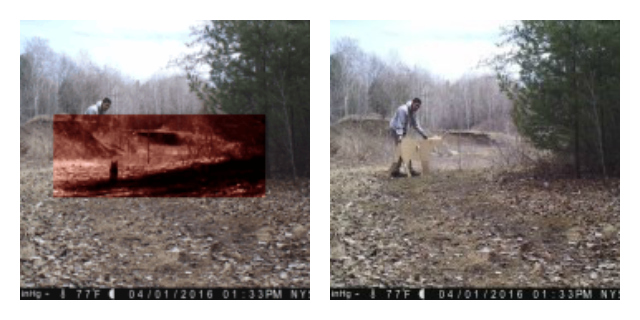
“They just don’t trot like that,” said Christopher Spatz, president of the Cougar Rewilding Foundation. “The cadence just doesn’t seem right.” He also shared emails from Alan Rabinowitz, the chief executive officer of Panthera, who stated, "The gait of the cat running away is wrong for a puma. While it's impossible to be certain with these kinds of videos, the consensus here is house cat.”
The video stirred up such interest because there are still periodic sightings, such as a cluster in 2015, occurring between Blue Mountain Lake and Indian Lake. In 2011, a qualified observer, DEC wildlife biologist Ken Kogut, saw a large cat step into an Adirondack road and then leap across the opposite lane in one bound. He said there was no question in his mind that this was a cougar. No housecat could make a leap across two lanes.
Further proof comes from a famous incident that started December 16, 2010, when a male panther materialized out of a snow squall in a Lake George backyard. On June 11, 2011, that same cat was killed by a car in Connecticut. In the book, "Heart of a Lion: A Lone Cat’s Walk Across America," author William Stolzenburg discusses how this cat walked from its birthplace in the Black Hills of South Dakota (revealed with DNA typing) over 1,800 miles, to within commuting distance of New York City.
could they come back?
The Adirondacks is already a comfortable home for the bobcat (Lynx Rufus.) These top out at a weight of 40 pounds for males, which is much smaller than the panther size of 140-200 pounds. (And this is considered "mid-sized" for a large cat. Siberian tigers can get to almost a thousand pounds.) Bobcats are not only much smaller, but they have only a stub of a tail. Panthers have much longer tails.
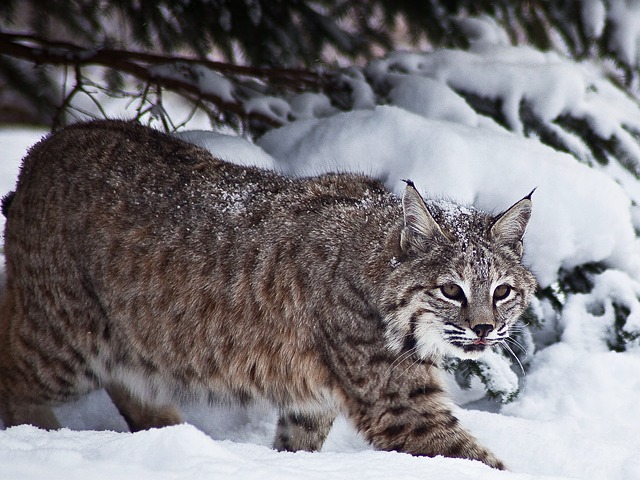
Motivation behind their return comes from one of their names, cougar. It comes from the Amazonian Tupi, meaning "false deer." It was meant to indicate how the lives of predators, and their prey, actually depend on each other. And this delicate balance has been completely upset by humans.
Most people don't know that the white-tailed deer that are so abundant in our eastern woodlands were almost extinct at the opening of the 20th century, victims of unregulated hunting. New regulations and conservation programs brought them back, but almost too successfully. Now, white-tailed deer routinely outbreed their environment's carrying capacity. This puts the environment into real danger.
“The extinction of the eastern puma and other apex carnivores upended the ecology of the original colonies and beyond,” says scientist Michael Robinson of the Center for Biological Diversity in Washington, DC, quoted in an article for National Geographic's Cat Watch blog. “More than a century after deer almost went extinct in the Northeast, they’ve returned with a voracious vengeance. We have forests that have lost the top and bottom of the food chain. It should be a clarion call to recover pumas and all our apex predators to sustainable levels to help rebalance a world that is out-of-kilter.”

Panthers coming back would be good for the forests, and even the deer. What about the humans? Relax. Panthers do not consider humans their prey.
In one hundred years on the entire North American continent, there have been only 53 reported attacks. That's about how many people are killed by bees each year. Out of those hundred years, there were only ten fatalities. Faulty toasters are more deadly, killing about 700 people a year.
To put this in perspective, it's been estimated there are five thousand pet tigers being kept in the United States. We are actually in more danger from a misguided neighbor than the complete return of Adirondack panthers.
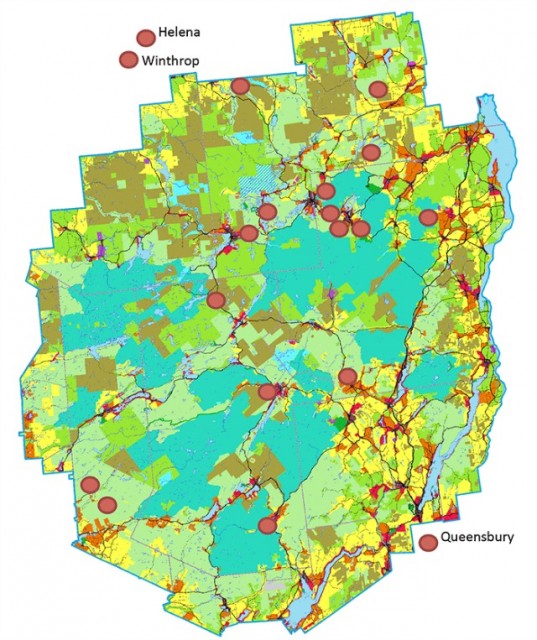
This map of Adirondack area sightings, compiled by Cougar Watch, indicate a large possible territory. Cougar Watch has a guide on their page that can help us figure out if those tracks really are a panther.
They have a paw width between 5 and 3 inches, with the distinctive feline paw pad shape. Dog tracks often have claw marks in them, while panthers keep theirs sheathed.
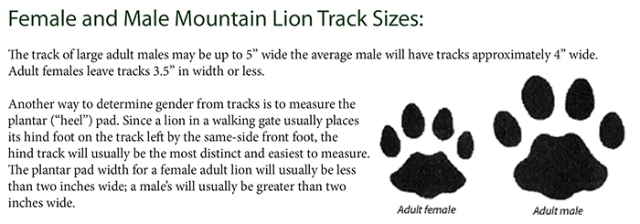
Every kind of clue can be a help towards discovering the truth of panthers returning to the Adirondacks. This is a clip of a video, of a hike on Panther Mountain. It indicates how, at first glance, even a dog might have the right coloring and tail to make someone think they have glimpsed a panther.
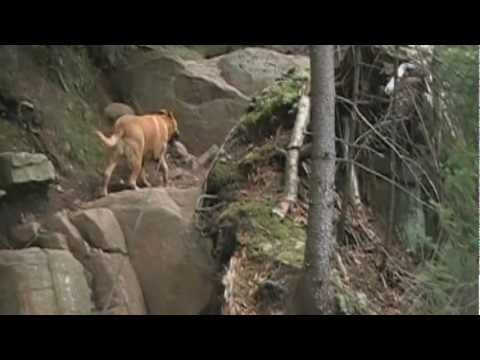
After all, a nature preserve shouldn't pick and choose.
It should have all of the nature.
Find our own comfy lair with the right lodging. Hunt down a great meal with our dining. Enjoy all our fantastic outdoor recreation.
Header Photo by Greg Hume (Captive cougar at the Cincinnati Zoo.)
















